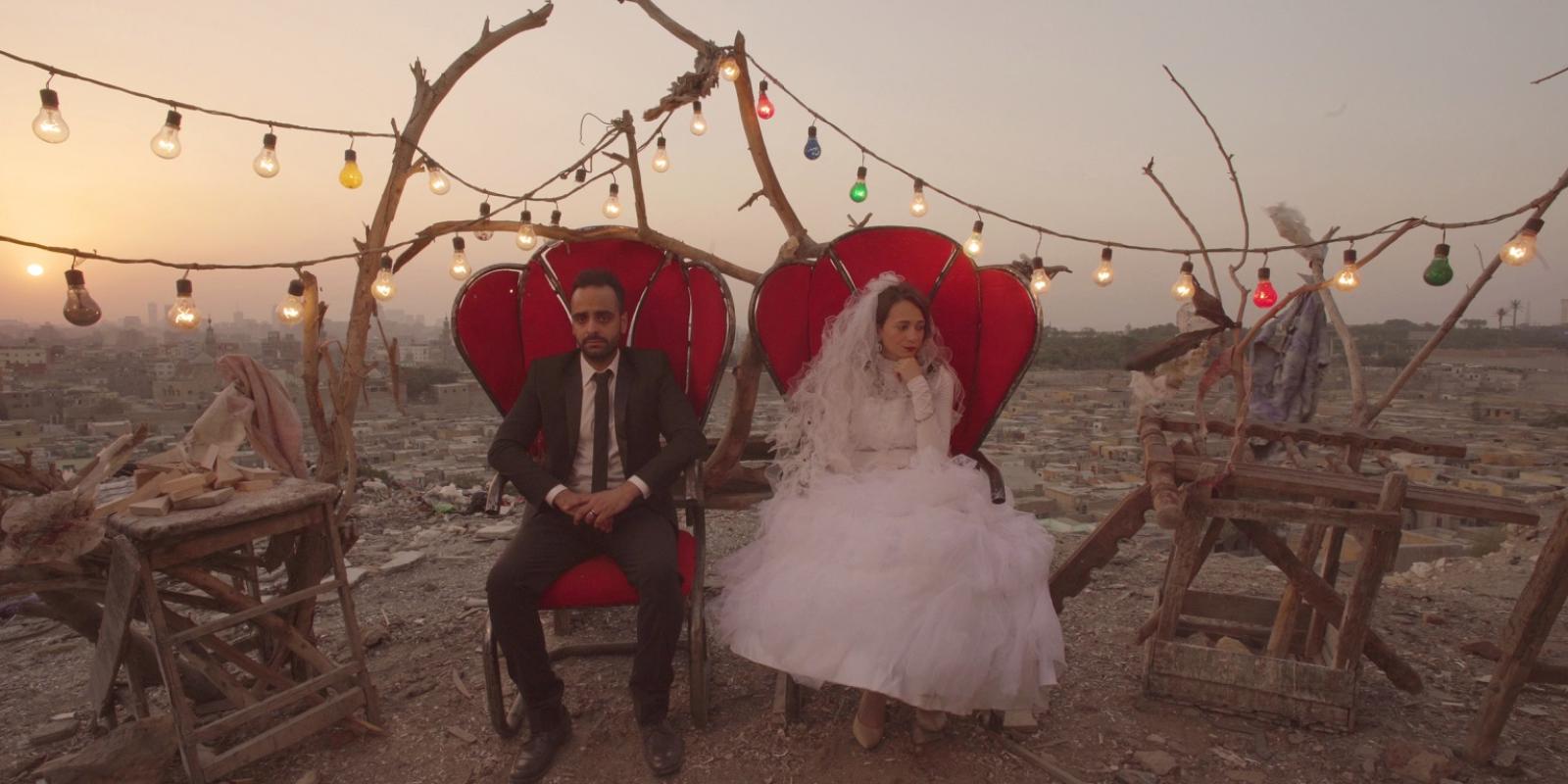
AUC’s TCC Hosts Three Exhibitions on Art and Technology
The American University in Cairo (AUC) announced the opening of a trilogy of exhibitions addressing questions of art, technology and society in The Tahrir Cultural Center (TCC). Showing in the Margo Veillon Gallery, Glitch exhibition brings together a group of international artists to explore the ways our understandings of the past, present and future are mediated through technology. In the Future Gallery, Laila Shereen Sakr, aka VJ Um Amel, Egyptian- American artist and professor at University of California, Santa Barbara, holds her solo exhibition in the Arab world: titled Beit Um Amel. Showing in the Marriot Gallery, Corner of A Dream is a solo exhibition by Bahia Shehab, professor at AUC’s Department of Arts. The exhibitions are curated by Dr. Shiva Balaghi, senior advisor to the President and Provost of AUC for Arts and Cultural Programs.
“Collectively, these exhibitions probe the creative disruptions and possibilities enabled by technology. Technology helps generate the conditions of possibility for creating, circulating and seeing new kinds of art, while the artistic imagination extends the capacity of technology for social change. At the same time, technology can erect other kinds of barriers, whose implications can remain obscure. In these exhibitions, viewers will be able to see how the artist’s visual language reflects, engages and impacts the relationship between technology and society,” said Balaghi.
“There has been a growing focus on the ways technology is transforming the arts. Artists, in turn, shift the boundaries of technology through their creative interventions. With these three exhibitions, we have brought together an international group of artists to look at the complex relationship between art, technology and society,” Balaghi explained, “Some use drawing and painting, others use new digital art forms. All of them, in their own unique ways, shed light on the ways technology impacts the human condition.”
Glitch
A group of international artists use video art, digital paintings, photographs, multi-media installations, drawings, paintings, and sculptures to explore the ways our understandings of the past, present, and future are mediated through technology. Exhibited artists include VJ Um Amel (b. Alexandria, Egypt), Petra Cortright (b. Santa Barbara, United States), Shady El Noshokaty (b. Damietta, Egypt), Mounir Fatmi (b. Tangier, Morocco), Jonathan Hexner (b. Dhaka, Bangladesh), Pouran Jinchi (b. Mashhad, Iran), Basim Magdy (b. Assiut, Egypt), Haytham Nawar (b. Gharbiya, Egypt), Mona Omar (b. Cairo, Egypt), Kour Pour (b. Exeter, United Kingdom), Shahzia Sikander (b. Lahore, Pakistan) and Talisker (b. Paris, France).
“In 2003, I had one of my most important early solo shows at AUC's Falaki Gallery, which was curated by Aleya Hamza. I am happy to return to AUC in 2020 to show my work in Glitch at the Tahrir Cultural Center,” said artist Basim Magdy.
Beit Um Amel
In her first solo exhibition in the Arab world, Laila Shereen Sakr, aka VJ Um Amel, suggests there is no longer a digital divide between theory and practice, that the integration of technology into our everyday lives means we are all already living an immersive digital experience. The figure of Arab cyborg and mother come together in VJ Um Amel who transforms AUC’s Future Gallery into her home, Beit Um Amel. Welcoming visitors into her home, the cyborg asks that we navigate shifting data landscapes with greater attention, awareness, and an insistence on hope.
“My scholarly writing and my art practice are so entwined around Glitch Aesthetics and Egypt. And it feels so right that my first solo exhibition in Egypt is being held at The American University in Cairo -- an esteemed institution of higher learning and an important cultural institution in this country,” said VJ Um Amel, “I am delighted to welcome guests to visit my new works on canvas, Cyborg Portraits, Rosetta Tweets, and a portal into R-Shief’s ten-year-old vault."
Corner of a Dream
Known for her groundbreaking work combining Arabic typography and graffiti, Bahia Shehab extends her visual poetics with a series of short videos inspired by the poetry of Mahmoud Darwish. Shehab revisits the sites of her previous graffiti projects, filming about the walls she painted in Beirut, New York, Marrakech and the Greek island of Cephalonia. The shift from graffiti to video marks a change in the artist’s work that reflects larger transformations in the relationship between artists and society in Egypt. Shehab’s quietly evocative video installation offers a view of the lingering aftermath of social upheavals. The artist describes her graffiti walls as “meeting points” which reflect the unity of humanity. On her exhibition, Shehab said: “The exhibition is a video installation visualizing four stanzas by Palestinian poet Mahmoud Darwish. The stanzas are: My country is not a suitcase (وطني ليس حقيبة), Those who have no land have no sea (من لا بر له لا بحر له), Imprisoned Butterflies (كان لي يومٌ يكون و فراشةٌ بنت السجون) and We love life if we had access to it (نحن نحب الحياة إذا ما إستطعنا إليها سبيلا). My visual poems are about identity, belonging, and a reminder of our collective humanity.”
The exhibits will remain on view until March 11, 2020.